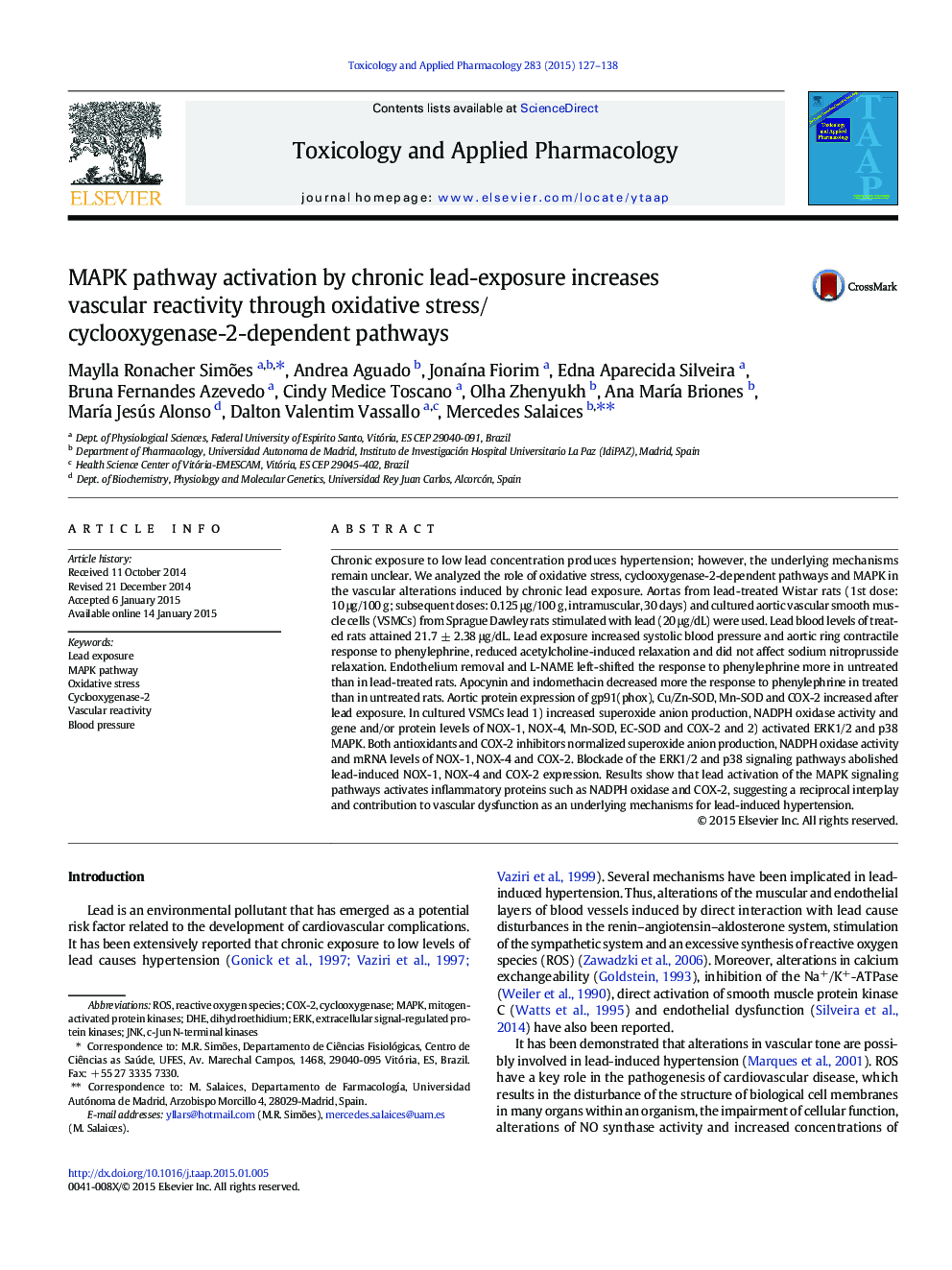| Article ID | Journal | Published Year | Pages | File Type |
|---|---|---|---|---|
| 5846044 | Toxicology and Applied Pharmacology | 2015 | 12 Pages |
Abstract
Chronic exposure to low lead concentration produces hypertension; however, the underlying mechanisms remain unclear. We analyzed the role of oxidative stress, cyclooxygenase-2-dependent pathways and MAPK in the vascular alterations induced by chronic lead exposure. Aortas from lead-treated Wistar rats (1st dose: 10 μg/100 g; subsequent doses: 0.125 μg/100 g, intramuscular, 30 days) and cultured aortic vascular smooth muscle cells (VSMCs) from Sprague Dawley rats stimulated with lead (20 μg/dL) were used. Lead blood levels of treated rats attained 21.7 ± 2.38 μg/dL. Lead exposure increased systolic blood pressure and aortic ring contractile response to phenylephrine, reduced acetylcholine-induced relaxation and did not affect sodium nitroprusside relaxation. Endothelium removal and L-NAME left-shifted the response to phenylephrine more in untreated than in lead-treated rats. Apocynin and indomethacin decreased more the response to phenylephrine in treated than in untreated rats. Aortic protein expression of gp91(phox), Cu/Zn-SOD, Mn-SOD and COX-2 increased after lead exposure. In cultured VSMCs lead 1) increased superoxide anion production, NADPH oxidase activity and gene and/or protein levels of NOX-1, NOX-4, Mn-SOD, EC-SOD and COX-2 and 2) activated ERK1/2 and p38 MAPK. Both antioxidants and COX-2 inhibitors normalized superoxide anion production, NADPH oxidase activity and mRNA levels of NOX-1, NOX-4 and COX-2. Blockade of the ERK1/2 and p38 signaling pathways abolished lead-induced NOX-1, NOX-4 and COX-2 expression. Results show that lead activation of the MAPK signaling pathways activates inflammatory proteins such as NADPH oxidase and COX-2, suggesting a reciprocal interplay and contribution to vascular dysfunction as an underlying mechanisms for lead-induced hypertension.
Keywords
Related Topics
Life Sciences
Environmental Science
Health, Toxicology and Mutagenesis
Authors
Maylla Ronacher Simões, Andrea Aguado, JonaÃna Fiorim, Edna Aparecida Silveira, Bruna Fernandes Azevedo, Cindy Medice Toscano, Olha Zhenyukh, Ana MarÃa Briones, MarÃa Jesús Alonso, Dalton Valentim Vassallo, Mercedes Salaices,
